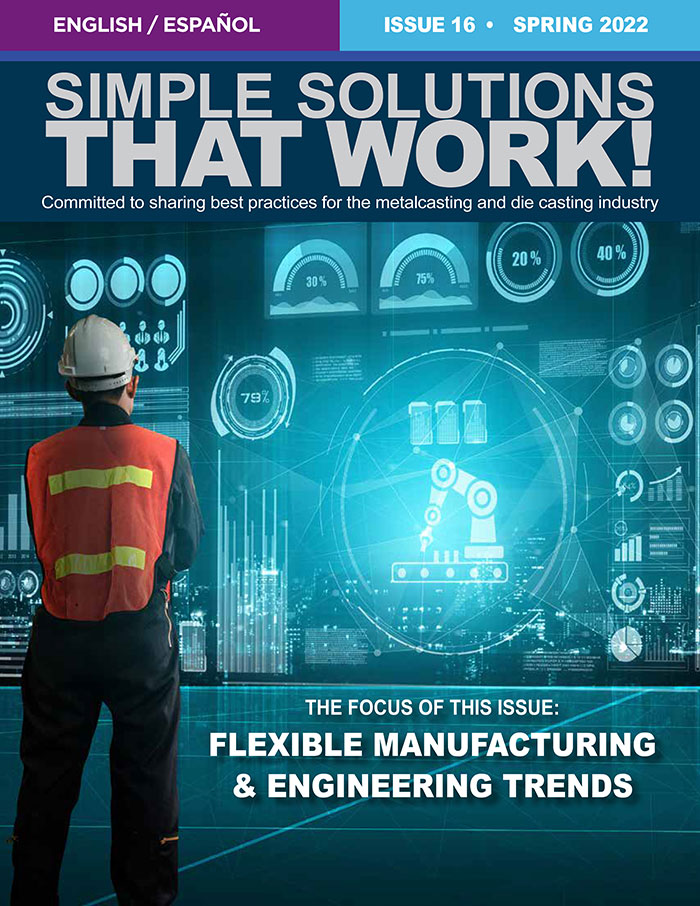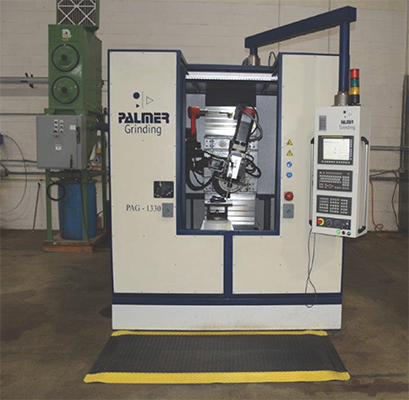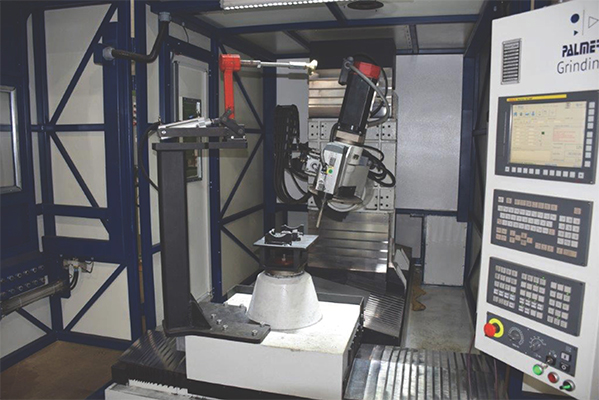Foundry & industrial processing Machinery EQUIPMENT & SYSTEMS
U.S. & Canada Call 1.800.457.5456
Evolving the Foundry Cleaning Room with Automatic Grinding
Home Articles Evolving the Foundry Cleaning Room with Automatic Grinding

Palmer Manufacturing
Palmer Manufacturing & Supply, Inc.
ARTICLE TAKEAWAYS:
Automatic grinding meets the employment shortage head-on by decreasing labor requirements while increasing casting production and quality
Metal casting facilities across the globe are facing the daunting task of maintaining enough employees to meet their daily production demands, and the area of the operation that usually takes the brunt of this manpower shortage is the foundry cleaning room. As our industry continue to change, it becomes increasingly difficult to find new hires that want to work in the cleaning room. If you're lucky enough to have the proper personnel available, there are everyday issues to battle which includes chronic absenteeism, failed drug screens, work-environment concerns, a high rate of injuries and workers compensation, etc.
This on-going issue presents a huge problem for most foundry operations because very often the bottleneck is caused by castings that cannot ship or be invoiced until they are ground/finished. Since the grinding/finishing operation is such a hard, physical, and dirty job, the cleaning room is usually the most challenging area to staff. No matter if you have a high production or job shop foundry, automatic grinding technology can provide the answer and relieve the stress related to managing these issues while increasing your quality and profitability. As a result, in just a few short years the rationale for automating the foundry cleaning room has evolved from "replacing excessive personnel" to "repurposing productive employees".
For many years automatic grinding was considered a solution for just the high production shops where they work on the same size and type of castings day in and out. Fortunately, the technology has now advanced to allow job shops to take advantage of this equipment as well. Suppliers have listened to the needs and desires of the foundry industry and responded with upgraded equipment that is more user friendly, reliable, flexible, and versatile. Adaptions have been made in the equipment and technology over the years that allow for very quick changeovers, ease of operation, simplified programming, lower maintenance, and shorter cycle times. Even with all these advances in the technology, the big hurdle for most foundry operations remains the justification of the capital expense on the automatic grinding equipment, or the ROI analysis.
The ROI (Return on Investment) quantifies the value of your investment and will turn the subjective into the objective, and organizational uncertainty into support for the investment. In layman terms, the ROI quantifies that the result of the investment will produce more product at a lower cost while providing a means to measure the particular investment versus other investment options.
If you consider that Foundry A currently produces a casting for $200 in cost. One quarter of that cost is the material cost ($50), one quarter is the overhead burden ($50) and one half is the total labor cost ($100). It takes one hour to manually grind the casting at $50/hour labor cost, so the cleaning room time is half of that total labor cost ($50). If the foundry can bring in automatic grinding equipment and reduce the cycle time for grinding by a conservative 50% ($50/2=$25), the total casting cost is now reduced to $175, providing the opportunity to double production because the cleaning room time is reduced by 50% as well. Let’s say you currently produce 40,000 pieces/year of this casting and the automatic grinding machine costs $400,000. The simple ROI calculation on this project could look like this:


(Additional Earnings) [40,000 pcs. x $25] – (Initial Investment) $400,000/(Initial Investment) $400,000 = 1.5
In addition, if you factor in the intangible costs, employee productive opportunity cost and energy expended associated with a new hire that you are saving, this ROI analysis becomes increasingly more attractive. While it's difficult to pinpoint an exact number, a Society for Human Resource Management study in August of 2021 stated that the average cost to hire an employee is $4,129, or 6 weeks of pay for a $15 per hour job.
This ratio acts as a financial measurement tool that quantifies how long it will take the equipment to pay for itself. In this case the equipment will be paid for and generate additional revenue in less than one year. This would be an excellent investment considering the short pay-off time and we have not factored in the additional revenue received from being able to increase production, savings from reductions in manpower and scrap or lower insurance costs. Some organizations are beginning to quantify the intangible costs with a numeric value and adding it into the additional earnings portion of the equation as a method to reflect the total savings more fairly in the ROI analysis for investment evaluation. For example, the elimination of the need and costs to hire additional employees might be valued at $100,000 for the year, so when added into the equation the ROI becomes 1.75 which decreases the term on the investment payback. The addition of an automatic grinding machine can be a very cost-effective solution for the elimination of manpower shortage, increasing productivity and higher quality castings.
Since the automatic grinding machine will more consistently and efficiently finish in one day the same total volume of castings that 3-4 employees can finish manually, a foundry can install one automatic grinder to produce the same work volume of those 3-4 productive employees. This provides the opportunity to repurpose 2-3 employees from the cleaning room into another area of the foundry. Under this scenario, with the increased productivity and decreased training time, the foundry can afford to increase employee wages and benefits to improve employee retention, while eliminating the manpower shortage. In addition, using an automatic grinding machine to dramatically reduce the physical nature of the job, the foundry can extend the productive life of their very best employees by reducing the stress on their bodies.
The addition of automatic grinding can change the entire dynamic of your foundry operation by removing manpower issues, increasing quality, improving productivity, and raising profitability.
Copyright © 2024 Palmer Manufacturing & Supply, Inc. | Terms and Conditions | Privacy Policy
Web published by Marketing Options, LLC.




